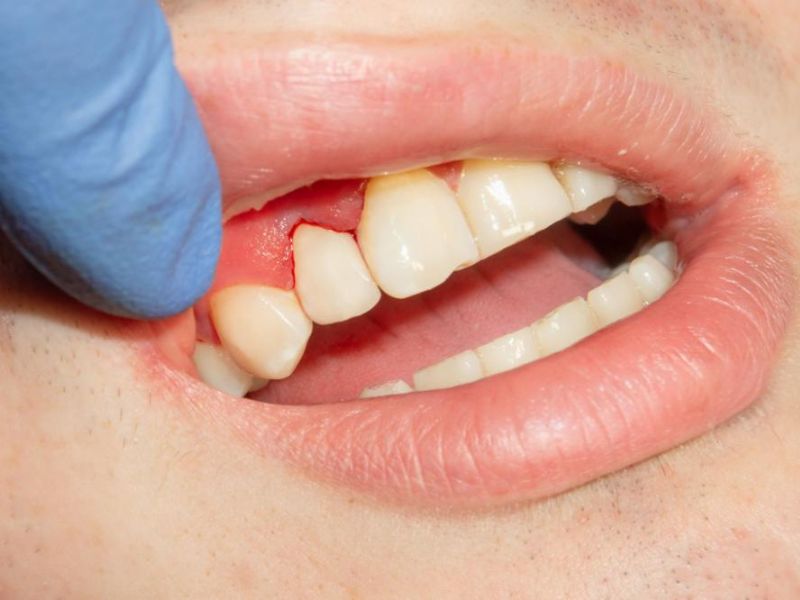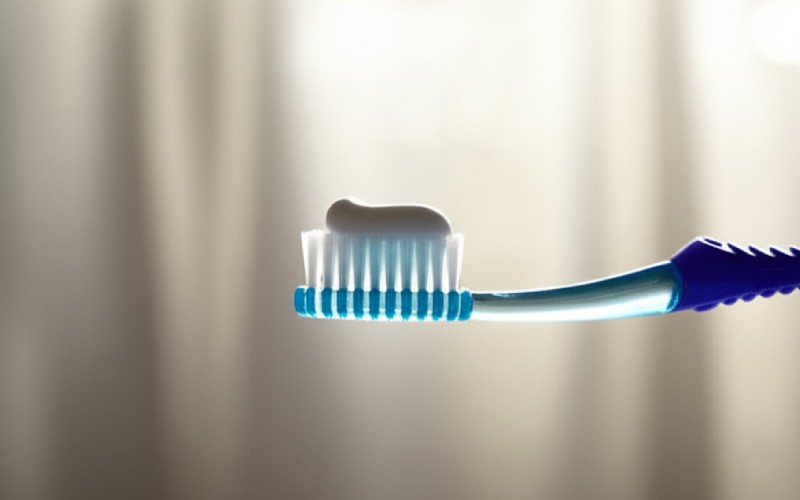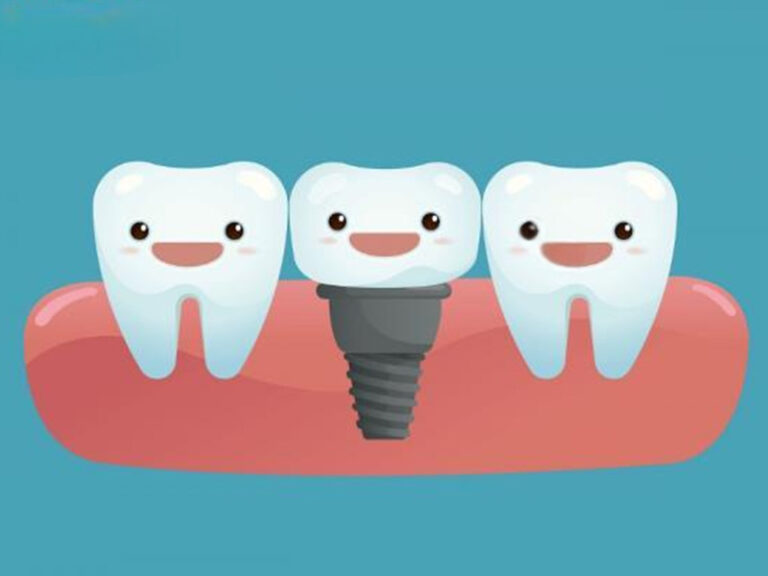
Can You Reverse Receding Gums? A Guide to Treatment Options
Have you noticed your teeth looking a little longer than they used to? Or maybe you feel a zing of pain when you eat something hot or cold? These can be signs of receding gums. You might feel like there’s nothing you can do. But I’m here to tell you that’s not true. This article will be your guide. I’ll walk you through what causes gum recession, what the treatment options are, and how you can take control of your oral health. You will learn about everything from simple changes at home to advanced dental procedures that can fix the problem. This is worth reading because understanding your options is the first step toward a healthy mouth and a confident smile.
Inhaltsübersicht
What Are Receding Gums, and Why Do They Recede?
When you first heard the term “receding gums,” you might picture gums literally running away from the tooth. In a way, that’s what happens. Receding gums occur when your gum tissue starts to pull back from the tooth. This process can be slow, happening over many years. As the gum tissue continues to recede, it exposes more of the tooth, and sometimes even the tooth’s root. This isn’t just a cosmetic problem; it’s a serious dental issue.
When your gums recede, they can form little pockets or a gap between the tooth and gum line. This gap becomes a perfect hiding place for harmful bacteria. If left alone, these bacteria can cause serious damage to the tissue and bone structures that hold your tooth in place. This can eventually lead to tooth loss. Understanding that gum recession is a health problem, not just a looks problem, is the first step. The good news is that there are many ways to manage and treat receding gums, especially if you catch them early.
This process where the gums recede is often a sign of underlying gum disease. Your gums are an important barrier that protects the sensitive parts of your tooth. When they recede, that barrier is broken. This can lead to a lot of problems, from pain to serious infections. That’s why paying attention to your gums is just as important as paying attention to your teeth. Your whole oral health system works together for a healthy mouth.
What Are the Early Symptoms of Gum Recession?
One of the most common early symptoms of gum recession is tooth sensitivity. Have you ever felt a sharp pain when drinking something cold or eating ice cream? When your gums recede, they expose the root of your tooth. The tooth root is not covered in hard enamel like the top of your tooth. This makes it much more sensitive. So, new or worsening tooth sensitivity is a big red flag for receding gums.
Another symptom you can see is a tooth that looks longer than the others. This is because as the gum tissue begins to recede, more of the tooth becomes visible. You might also notice a little notch or dip where the tooth meets the gum line. These are clear signs of gum recession. People often ignore these early signs. They think the sensitivity will just go away. But this symptom is your body telling you something is wrong.
You might also see inflammation or redness in your gums. Healthy gums are firm and pink. If your gums are red, swollen, or bleed when you brush, you might have gingivitis. Gingivitis is an early stage of gum disease, and it is a major cause of receding gums. If you see any of these signs, it’s a signal to pay closer attention to your dental hygiene and see a professional. Ignoring a symptom of receding gums will only let the problem get worse.

What Should I Expect During a Dental Consultation for Receding Gums?
Going to the dentist can make people nervous, but a consultation for receding gums is a simple and important step. During the consultation, your dental professional will do a full oral exam. They will look closely at your teeth and gums. They will be looking for the signs of gum recession we just talked about.
A key part of the consultation is measuring the recession. Your dentist or a periodontist (a gum specialist) will use a small tool called a probe to measure the depth of the pockets around each tooth. Healthy pockets are very shallow. Deeper pockets mean your gums have started to recede and pull away from the tooth. This measurement helps them understand how serious your gum recession is.
After the exam, your dental provider will talk to you about what they found. They will explain the causes of your gum recession and discuss your treatment options. This is your chance to ask questions. You can ask what caused your gums to recede and what you can do to stop it. They will give you a personalized plan to treat your receding gums and improve your overall gum health. This consultation is the start of your journey to a healthier smile.
Can You Truly Reverse Receding Gums?
Can you really reverse receding gums? The honest answer is a bit tricky. Once gum tissue has been lost, it does not grow back on its own. So, in that sense, you can’t naturally reverse the process once it has happened. I know that can sound scary, but please don’t lose hope. There is a lot you can do.
While you can’t make your gums grow back by yourself, modern dental treatments can. There are advanced dental procedures that can restore your gum line and cover the exposed roots. These treatments can effectively reverse the damage caused by gum recession. Procedures like a gum graft or the pinhole surgical technique are designed for regeneration of the gum line. So, while you can’t reverse receding gums at home with a special toothpaste, a dental professional can help reverse the damage.
The most important thing to remember is that you can stop gum recession from getting worse. By adopting good oral hygiene practices and getting the right treatment, you can halt the process. The goal is to prevent further damage and protect your teeth. So, the focus should be on treatment and prevention. You have the power to stop your gums from continuing to recede.
What Are the Main Things That Cause Gum to Recede?
One of the biggest causes of gum recession is periodontal disease. This is a serious gum infection that damages the soft tissue and can destroy the bone that supports your tooth. Periodontal disease starts with plaque, a sticky film of bacteria that forms on your teeth. If plaque isn’t removed, it hardens into tartar. This buildup leads to gingivitis, the earliest stage of gum disease, which causes irritation and inflammation. If not treated, it can become a much worse periodontal disease and cause your gums to recede.
Believe it or not, brushing your teeth too hard can also cause gum recession. You might be used to think brushing aggressively meant your teeth were getting cleaner. But brushing too hard or using a toothbrush with hard bristles can wear down your tooth enamel and push your gums back. It’s important to use a soft-bristled toothbrush and brush gently for two minutes, twice a day. Good dental hygiene is about being thorough, not aggressive.
Other factors can also cause gum to recede. Your genes can make you more susceptible to gum disease. Using tobacco products is also very harmful to your gums. It weakens your immune system, making it harder to fight off the bacteria that cause gum infections. Even grinding your teeth can put too much force on your gums and cause them to recede. Understanding the causes of gum recession is key to preventing it.
How Do You Treat Receding Gums in the Early Stages?
If your gum recession is in the early stages, you may not need surgery. The first line of treatment is often a deep cleaning procedure called scaling and root planing. During this procedure, the dental hygienist removes all the plaque and tartar from your tooth surfaces and below the gum line. Then, they smooth out the tooth root surfaces. This helps your gums reattach to the tooth and makes it harder for bacteria to build up again.
Improving your at-home oral hygiene is also a critical part of the treatment. Your dentist will show you the right way to brush and floss to remove plaque without harming your gums. You should brush your teeth gently with a soft-bristled toothbrush and a good toothpaste. Daily brushing and flossing are your best defense against the bacteria that cause your gums to recede. Your dentist might also recommend an antibacterial mouthwash to help control bacteria.
Making these changes can help prevent further gum recession. This early treatment is all about stopping the problem in its tracks. Regular dental check-ups are also vital. Your dental team can monitor your receding gums and make sure your oral hygiene routine is working. Taking these steps can keep your mild gum recession from turning into a more severe problem.
When is Surgical Treatment Necessary for My Receding Gums?
If your gum recession is more advanced, a deep cleaning might not be enough. In severe cases where there is a lot of bone loss or very deep pockets, surgical treatment may be the best option. Your periodontist will recommend a surgical procedure to repair the damage and prevent more problems. The goal of surgical treatment is to cover the exposed tooth root and strengthen the gum tissue.
One of the most common surgical treatments is a gum graft. During a gum graft, the periodontist takes a small piece of healthy tissue, often from the roof of your mouth, and attaches it to the area where your gums have receded. This new tissue covers the exposed root and helps create a healthier gum line. A graft is one of the most effective ways to treat receding gums and reduce sensitivity.
This type of surgical treatment is a form of regeneration. It helps rebuild the gum tissue that was lost. While the idea of surgery can be scary, these are very common and successful procedures. Your dental team will make sure you are comfortable. Deciding on surgical treatment is a big step, but for many people experiencing gum recession, it is the best way to protect their tooth and restore their oral health.
What is the Pinhole Surgical Technique Treatment?
Another amazing surgical option is the pinhole surgical technique. I find this treatment fascinating because it’s much less invasive than a traditional graft. It’s a newer, advanced dental procedure for treating receding gums. Instead of cutting and stitching tissue, the periodontist makes a very small hole, like a pinhole, in the gum tissue above the tooth that needs treatment.
Through this tiny hole, the surgeon uses special instruments to gently loosen the existing gum tissue. They then slide the loosened tissue down to cover the exposed tooth root. It’s like pulling a blanket down over your feet. There are no large cuts and no stitches. This makes the recovery much faster and more comfortable for the patient. The pinhole surgical technique is a fantastic gum recession treatment option.
This technique is a great way to treat multiple receding gums at once. Because it’s less invasive, a surgeon can work on several teeth in a single visit. This treatment helps to create a more natural-looking gum line and can immediately reduce tooth sensitivity. If you need surgical treatment for your receding gums, you should ask your periodontist if the pinhole surgical technique is a good option for you.

Why Might My Receding Gums Get Worse?
Your receding gums may worsen if the underlying cause is not addressed. If periodontal disease is the reason your gums recede, and you don’t treat the infection, it will continue to damage your gums and the bone that supports your teeth. This is why just noticing you have receding gums is not enough. You have to take action. The bacteria that cause the disease will continue to thrive in the pockets between your tooth and gum.
Poor oral hygiene habits can also worsen receding gums. If you don’t brush and floss correctly every day, plaque and tartar will build up. This buildup of bacteria will cause more inflammation and push your gums even further away from your tooth. Also, continuing to brush too aggressively can physically wear away more of your gum tissue over time. You must be gentle with your dental hygiene practices.
Ignoring the problem is the surest way to make it worse. I’ve seen people hope their receding gums will just stop on their own. But without treatment, the recession will likely continue. This can lead to more severe sensitivity, an increased risk of decay on the tooth root, and ultimately, tooth loss. Receding gums are a progressive problem. The best way to stop them from getting worse is with professional dental treatment and excellent at-home care.
How Can I Schedule an Appointment and Prepare for Treatment?
The first and most important step is to schedule an appointment with your dentist. If you see any signs of gum recession, don’t wait. Call your dental office today. When you make the appointment, tell them you are concerned about your receding gums. This will help them prepare for your visit. If you don’t have a regular dentist, the American Dental Association website can help you find one in your area.
Before your appointment, think about any questions you have. Write them down so you don’t forget. You might want to ask about the specific causes of your gum recession, what all the treatment options are, and what the costs might be. Be ready to talk about your oral hygiene routine and any symptoms you are having, like tooth sensitivity. The more information you can give your dental team, the better they can help you.
Preparing for treatment means committing to better oral health. Once you and your dentist decide on a treatment plan, follow it carefully. This might mean improving your brushing and flossing, using a special mouthwash, or getting ready for a surgical procedure. Taking control of your gum recession starts the moment you decide to schedule an appointment. It’s a powerful step toward a healthy mouth for years to come.
Wichtigste Erkenntnisse:
- Receding gums happen when your gum tissue pulls away from your tooth, exposing the root.
- The main causes are gum disease, brushing too hard, tobacco use, and genetics.
- Common symptoms include tooth sensitivity and teeth that look longer than usual.
- You cannot make gum tissue grow back on your own, but dental treatments can fix the problem.
- Early treatment often involves a deep cleaning called scaling and root planing and better oral hygiene.
- For severe cases, surgical options like a gum graft or the pinhole surgical technique can restore your gum line.
- The most important thing you can do is to see a dental professional to stop the recession from getting worse.




